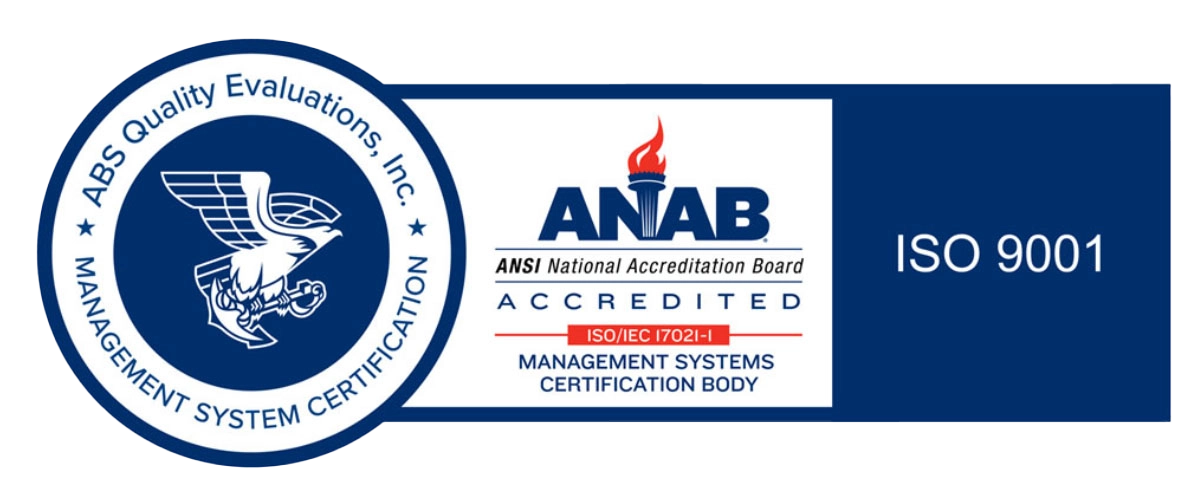PolyTerm® Ceramic Caps
Standard MLCCs are prone to cracking due to mishandling, depanelization, and board flexing. In response to customer requests for higher resistance to mechanical stress, and as a result of continuous efforts to improve our products, JDI has introduced PolyTerm® termination ceramic capacitors to meet those customer requirements for increased resistance to flexure cracking.
PolyTerm® is a conductive epoxy termination material loaded with silver, allowing it to absorb much more bending force than standard termination material. After termination PolyTerm® parts are nickel and tin plated using the same process as standard parts. There is no effect on solderability or capability to withstand the soldering process. PolyTerm® capacitors are ideal for use in telecom, power supply, inverter, and modem applications.
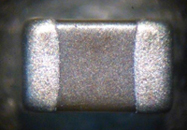
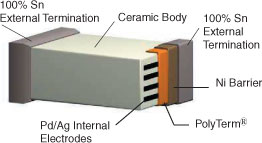
Features:
- RoHS Compliant
- Lead Free Terminations 100% Sn, Final Termination
- Electrodes: Pd/Ag
- Core Termination: PolyTerm®
- Middle Barrier Layer: Ni
- External Termination Layer: 100% Sn
- NP0 and X7R temperature coefficient
- Highly reliable performance
- Industry standard case sizes
General Specifications:
- Case Size: 0805, 1206, 1210, 1808, 1812, 1825, 2211, 2220, 2225
- Rated Voltage: 500 - 5,000VDC & 250 VAC
- Dielectrics Type: NPO, X7R
- Reliability: 1,000 Hrs, 125°C, 1.2 X WVDC
- Solderability: J-STD-002
- Certifications: TUV CERTIFIED to IEC 384 -14, IEC 60950 (250 VAC Safety Capacitors)
Availability-NPO Dielectric
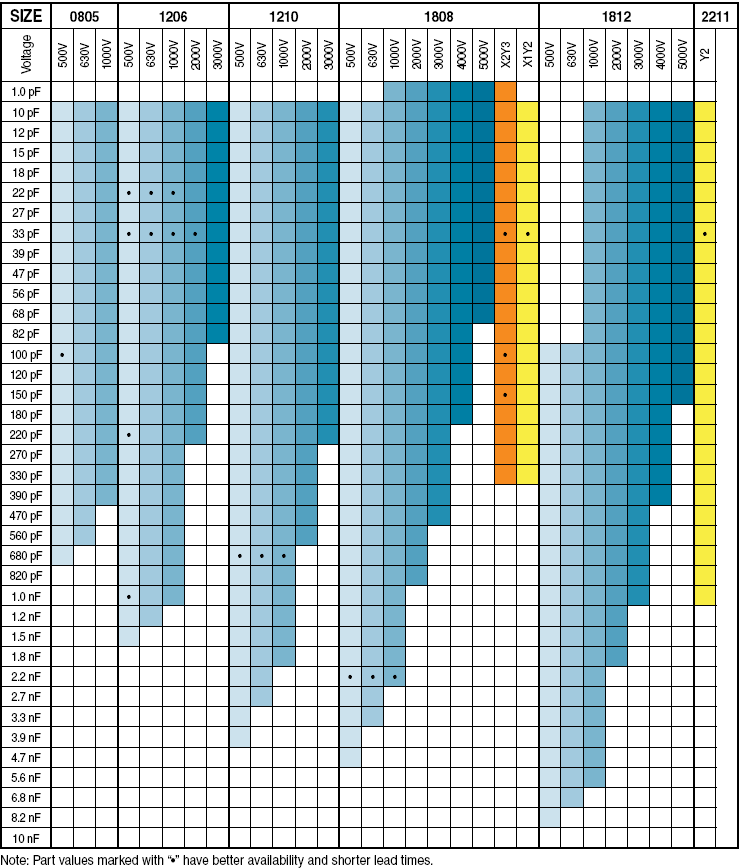
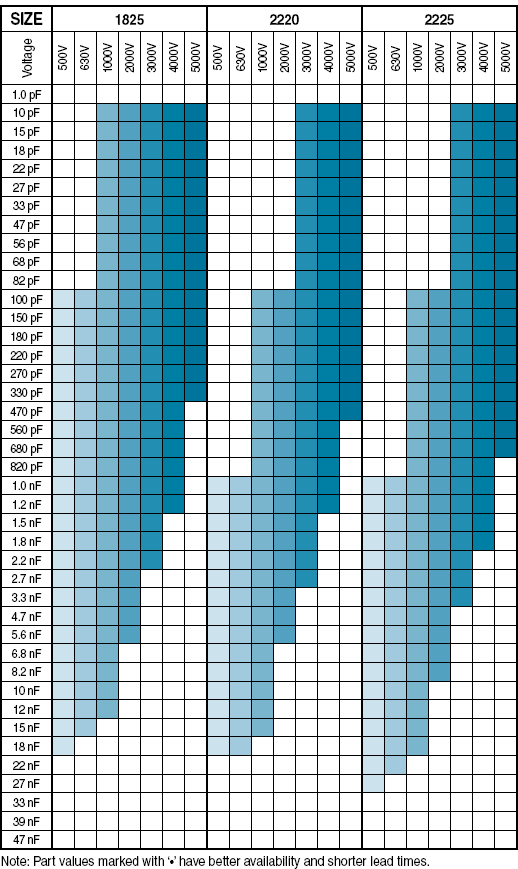
Availability-X7R Dielectric
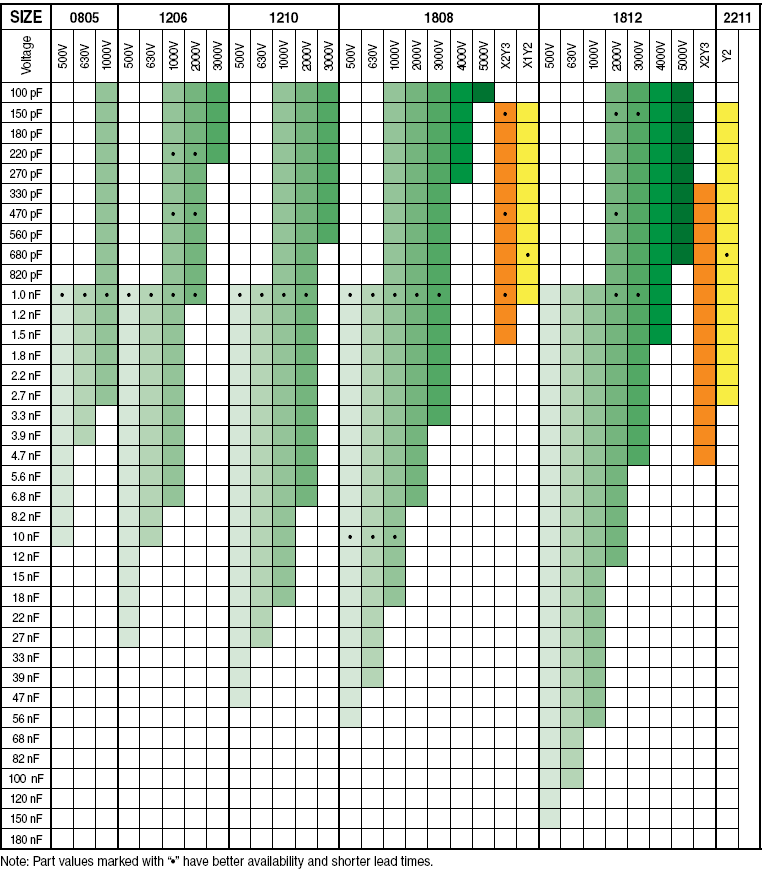
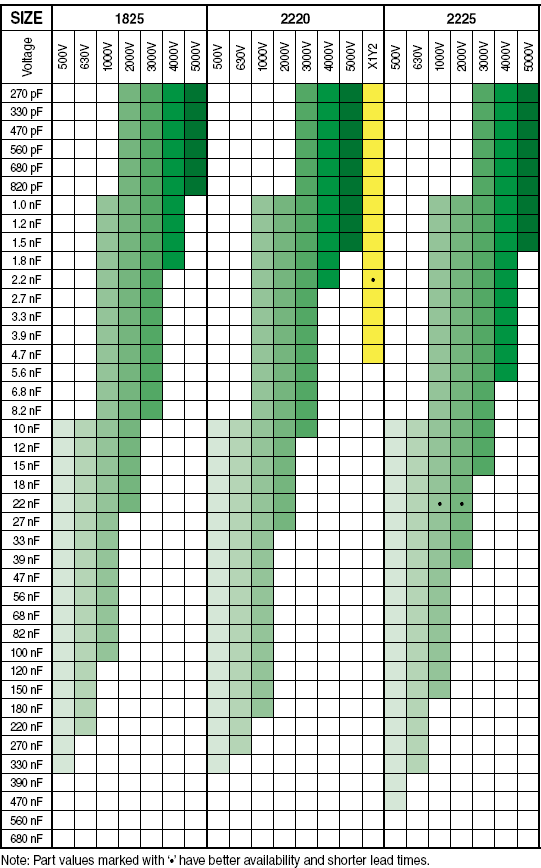
Bend Test Description & Results
The test board is designed so that the capacitance of the part can be measured while the part is being flexed (See figure 1). The capacitor is mounted at the center of the board. The testing equipment has a pressing block that is located so that it applies force at the center of the test board from below the part at a constant rate. Since the edges of the board are held in place by the support pins, this causes the board to flex. The amount of flex is measured in millimeters from the center of the board to the edge, please see "A" in Figure 2.
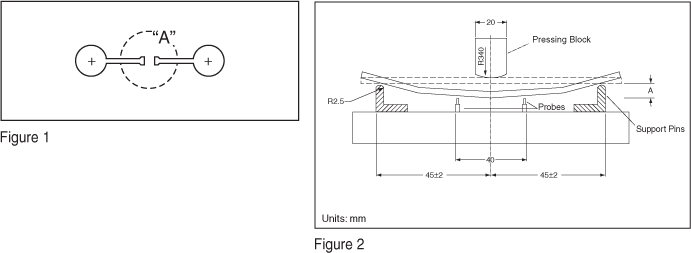
As the test board is flexed, the capacitance is constantly being measured by a capacitance meter which is connected to the test boards through capacitance probes. The capacitance is first measured at 0mm flex to establish the nominal value. The test board is then flexed to 1mm and held for at least on second, then the capacitance is measured, it is then flexed to 2mm, and so on up to 5mm. Any change in capacitance that exceeds 5% of the nominal value is considered a failure.
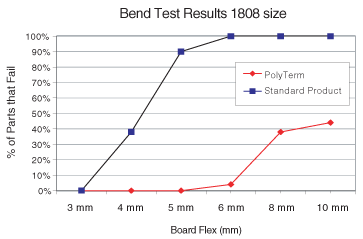
Example of Customer Application
Johanson Dielectrics receives a lot of requests from our customers to help them with cracking issues. One customer had cracking at a rate of 16% on 1206 size high voltage capacitors during their process. The top picture of Figure 3 shows a clear mechanical crack with a 45 degree angle at the termination solder pad interface. Repopulating the same board with PolyTerm® capacitors showed no cracking failures. The bottom picture of Figure 3 shows how PolyTerm® Capacitors solved these problems. No cracking was exhibited on any of the PolyTerm® capacitors during the customer assembly process.

How to Order
Valid options are shown except for Capacitance
A typical PN is ACDP302G1R0B1GF001B. This part number breaks down as follows:
AC Power Capacitors, 1808, NP0/C0G cap, 3,000.0V, 1.00pF±0.1pF cap, Polyterm Sn (RoHS) cap, Bulk cap
New Johanson Global Part Number Breakdown
* Not all combinations create valid part numbers, ask our Apps Engineering Team for assistance creating a valid part number Request for assistanceClick below to see the new Global Part Number Reference Chart for this product
Legacy How to Order Information


